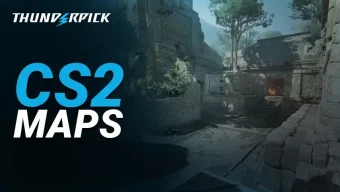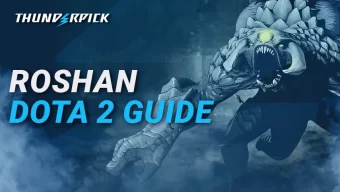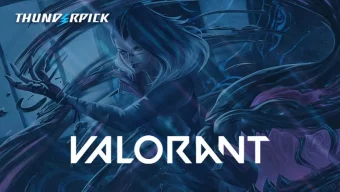VALORANT is one of esports’ biggest and most popular first-person shooter (FPS) titles. As of April 2024, nearly $28 million in prize money has been awarded to esports teams and players. The game also recorded its all-time peak viewership of 1.7 million in 2024, a testament to both its longevity and top-tier action.
If you’re among those who haven’t played the game yet, you may be wondering what type of rig you need to play it. In particular, how much hard-drive space do you need to run it? We’ll answer that question (and more) right here! This guide will detail all the specs to play VALORANT smoothly, helping you click heads from just about any setup.
Table of Contents
How Big Is VALORANT in terms of GBs?
As of April 4, 2024, VALORANT’s file download size is approximately 28 GB. However, after a complete installation, the game expands to occupy around 46.2 GB of storage space. That means you’ll need about 50 GB to play it without incurring any performance issues.
It is also advisable to allocate about 10 GB of extra space to accommodate future updates. These typically range between 3-5 GB each. While updates usually overwrite existing game files, the frequent release of patches means that the total storage required to play VALORANT will increase over time.
In this case, we recommend installing the game on a solid-state drive (SSD) with 500 GB total capacity. That way, you’ll guarantee being able to play comfortably and install other games. It’s worth noting that VALORANT’s file size is quite modest compared to other FPS titles, which often exceed 100 GB.
VALORANT System Requirements
But what are the PC system requirements for playing VALORANT? Well, as it turns out, you don’t need an expensive high-end gaming rig to play this game, which means you won’t have to drop a fortune on a graphics card! VALORANT is intentionally designed to be playable on a broad range of systems.
This is because VALORANT is primarily a tactical shooter that emphasizes skill-based gameplay. That means low latency and smooth performance are often favored over photo-realistic graphics, which allows players to focus on strategy and skill rather than hardware capabilities.
Minimum System Requirements
As you can tell from the VALORANT minimum specs, even gamers with lower-end hardware can join the action. To put things into perspective, the Intel Core 2 Duo E8400 was released on Jan. 1, 2008 (over 16 years ago!), while the Intel HD 4000 shipped in 2012 with old 22nm Ivy Bridge microprocessors.
While few gamers still rock these ancient relics, you can rest assured your PC can almost certainly play VALORANT—even on the basic settings! However, it won’t be the most enjoyable. The experience may feel like playing in a retro arcade, but it will get the job done.
- Operating System: Microsoft Windows 10 (Version 2004, Build 19041 or higher) or Windows 11 64-bit (with TPM 2.0 and UEFI Secure Boot)
- Processor: Intel Core 2 Duo E8400 or AMD Athlon 200GE
- Memory: 4 GB RAM
- Graphics: Intel HD 4000 or AMD Radeon R5 200 (1GB VRAM)
Recommended System Requirements
Having said that, you’ll probably want to play VALORANT at 1080p and maintain a smooth 60 frames per second (fps). And the good news is that you can! The recommended PC requirements for this setup are modest, requiring an Intel i3-4150 processor and a GT 750 graphics card or equivalent, which is reasonable by today’s standards.
The only exception is that 4 GB of RAM just won’t cut it if you plan to multitask while gaming. This includes placing VALORANT bets on Thunderpick or streaming your gameplay on Twitch. Instead, you should rock at least 8 GB of RAM to avoid bottlenecks and frame drops for a more seamless gaming experience.
- Operating System: Microsoft Windows 10 (Version 2004, Build 19041 or higher) or Windows 11 64-bit (with TPM 2.0 and UEFI Secure Boot)
- Processor: Intel i3-4150 or AMD Ryzen 3 1200
- Memory: 4 GB RAM (8 GB preferred)
- Graphics: NVIDIA GeForce GT 730 or AMD Radeon R7 240
High-End System Requirements
If you’re looking for the best possible gaming experience in VALORANT, you must meet the high-end system requirements below. With these specs, you can achieve a consistent 144+ fps at 1080p resolution, allowing you to leverage all the game’s mechanics and features to the fullest.
These specs are also ideal if you have a high refresh rate monitor. You’ll notice faster response times and have better visual clarity, which is important when playing VALORANT competitively. After all, every millisecond counts! As mentioned, more RAM is required when running other applications in the background.
- Operating System: Microsoft Windows 10 (Version 2004, Build 19041 or higher) or Windows 11 64-bit (with TPM 2.0 and UEFI Secure Boot)
- Processor: Intel i5-9400F 2.90 GHz or AMD Ryzen 5 2600X
- Memory: 4 GB RAM (16 GB preferred)
- Graphics: NVIDIA GTX 1050 Ti or AMD Radeon R7 370
Note: These VALORANT system specifications are intended to provide a general reference for optimal performance, but actual requirements may differ depending on individual setups, hardware configurations, and bespoke software environments.
Can I Play VALORANT On Consoles?
Yes of course! And you can read all about it in our VALORANT On Console post.
Now that you know how big is VALORANT, do you want even more ways to experience VALORANT’s fast-paced action? Place your bets on the latest matches and enjoy competitive odds right here at Thunderpick!
Always practice Responsible Gambling and check out our latest promo offers and boosts. T&Cs apply. 18+ to play.







